In the dynamic world of global fast fashion, where trends shift with lightning speed and consumer preferences evolve rapidly, navigating the landscape requires a keen understanding of the multifaceted forces at play.
At the forefront of this ever-changing arena stands Zara, a titan in the fashion industry renowned for its agility and innovation.
However, behind its seamless facade lies a complex web of external factors that significantly influence its operations.
In an environment marked by volatility and unpredictability, the PESTEL analysis model emerges as a beacon of clarity, offering insight into the political, economic, social, technological, environmental, and legal factors shaping Zara’s journey.
ZARA: A Spanish Fast-Fashion Giant
Zara is a household name synonymous with trendy clothing at affordable prices. But this Spanish retail giant boasts a rich history and a well-defined strategy that has propelled it to the forefront of the fast-fashion industry. Let’s delve deeper into the world of Zara.
From Zorba to Zara: A Humble Beginning (History)
Zara’s story began in 1975, not with the name we know today, but as “Zorba” – a small clothing store founded by Amancio Ortega in Spain.
The name was later changed to Zara to avoid confusion with a local bar. The focus from the very beginning was on trendy designs at competitive prices.
Beyond Clothing: A Range of Products (Activities)
Zara’s core business lies in clothing for women, men, and children. However, it has expanded its offerings to include a wider range of products:
- Accessories: Shoes, bags, jewelry, scarves, and more.
- Beauty: Zara Beauty, launched in 2021, offers makeup, fragrances, and skincare products.
- Zara Home: A separate line featuring homeware, décor items, and even a special laundry detergent line designed to reduce microfiber shedding.
Fast Fashion Powerhouse: Achievements and Recognition
Zara’s achievements are undeniable:
- Global Presence: With over 2,000 stores worldwide, Zara has an international reach.
- Speed and Agility: Zara is known for its rapid response to fashion trends, with new collections hitting stores as often as twice a week.
- Inditex Leader: Zara is the flagship brand of the Inditex group, one of the world’s largest fashion retailers.
Who are the Main Players? (Competitors)
Zara faces stiff competition from other fast-fashion giants:
- H&M: A Swedish multinational with a similar focus on trendy clothing at affordable prices.
- Gap: An American clothing retailer with a broader brand portfolio but facing challenges in recent years.
- Forever 21: Another major fast-fashion player known for its ultra-trendy and budget-friendly pieces.
Behind the Scenes: Suppliers and Customers (Business Model)
Zara’s success hinges on a well-defined business model:
- Vertical Integration: Zara controls a significant portion of its production process, allowing for greater quality control and faster response times.
- Global Supply Chain: Zara has a network of suppliers spread across the globe, ensuring a steady flow of materials and finished products.
- Target Customer: Zara’s target audience is fashion-conscious individuals seeking trendy styles without breaking the bank.
The Secret Sauce: Zara’s Strategy
Several key elements contribute to Zara’s strategic edge:
- Focus on Design: Zara prioritizes in-house design teams to create trend-driven collections.
- Limited Production Runs: Zara produces clothes in smaller batches, creating a sense of urgency and exclusivity for customers.
- Data-Driven Decisions: Zara leverages sales data to understand customer preferences and adjust production accordingly.
Keeping Up with the Times: Recent News
Zara is constantly evolving, and recent news reflects this:
- Sustainability Efforts: Zara is facing increasing pressure to become more sustainable. The brand is trying to use recycled materials and improve its manufacturing processes.
- Online Presence: Zara is strengthening its online presence to cater to the growing trend of online shopping.
- Focus on Innovation: Zara is exploring new technologies like digital printing to streamline its production process further.
Zara’s journey from a small store in Spain to a global fashion powerhouse is a testament to its strategic vision and ability to adapt to changing trends.
As the fast-fashion landscape continues to evolve, Zara’s commitment to design, speed, and innovation will be key to maintaining its position as a leader in the industry.
Political environment
The international political landscape presents opportunities and challenges for Zara in the fast-fashion market. Here’s a breakdown of some key areas:
Opportunities:
Trade Agreements:
Existing trade agreements, like those enjoyed by Zara within the European Union, can facilitate smoother import/export of raw materials and finished products, reducing costs and increasing efficiency.
For instance, the European Union has trade agreements with other regions, allowing for duty-free access or reduced tariffs on certain goods. This benefits Zara’s import/export activities within the EU.
Government Subsidies:
In some countries, governments might offer subsidies to support domestic textile industries. This could potentially benefit Zara if it sets up manufacturing facilities in those regions.
Threats:
The war in Ukraine
The war in Ukraine had a severe impact on Zara’s sales. Negative effects included closing all 79 stores in Ukraine and the cessation of operations in Russia, resulting in lost sales potential from 502 stores and the online platform.
Additionally, global supply chain disruptions and increased production costs due to rising fuel and commodity prices posed challenges to Zara’s sourcing and manufacturing capabilities.
However, despite these setbacks, Zara’s overall growth trajectory remained intact. While short-term drawbacks were evident, they did not derail the company’s upward momentum, suggesting resilience in navigating through the complexities of the conflict.
Trade Wars:
Political tensions and trade wars between countries can disrupt Zara’s supply chain, leading to tariffs that inflate consumer prices. The recent trade disputes between the US and China impacted many fashion brands, including Zara’s parent company, Inditex.
In 2018, the US imposed tariffs on Chinese goods, impacting clothing imports and increasing prices for American consumers. If trade tensions escalate, this could be a potential future scenario for Zara in other markets.
Protectionism:
Rising nationalistic sentiments can lead to stricter import regulations or quotas, making it harder for Zara to access certain markets or source materials easily.
Sustainability Regulations:
Governments worldwide are increasingly implementing stricter regulations on environmental practices. This can force Zara to adapt its manufacturing processes and potentially increase production costs to comply.
Overall, Zara needs to navigate the complexities of the political environment. By staying informed about trade policies, potential regulations, and consumer sentiment, Zara can identify opportunities to expand its reach while mitigating potential risks.
Economic environment
Zara faces a dynamic international economic landscape, presenting challenges and opportunities for its global expansion endeavors. Inflationary pressures are elevating costs across raw materials, transportation, and labor, constraining Zara’s profit margins amidst a projected global inflation rate of 4.7% in 2023.
To address this, Zara may consider price adjustments for consumers or streamlining production processes for cost efficiency.
Currency fluctuations further complicate matters, potentially inflating expenses for Zara in importing materials or exporting finished products, especially with a stronger US dollar impacting sourcing from regions with weaker currencies.
Zara could counter these effects by diversifying sourcing locations or adopting currency hedging strategies. Conversely, according to the IMF, a robust global economy, forecasted to grow by 3.6% in 2023, presents an avenue for Zara to leverage increased consumer spending, particularly in emerging markets, for expanding its customer base.
Social environment
Zara operates within a fast-paced social and cultural sphere, where trends shape consumer behavior and expectations. Several key dynamics impact the fast-fashion industry, influencing Zara’s strategies:
Firstly, rising environmental concerns prompt Zara to adopt sustainable practices, evidenced by their eco-conscious collections and investments in recycling technologies.
Secondly, ethical consumerism necessitates Zara’s commitment to fair labor practices, addressing consumer demands for transparency and accountability.
The shift towards second-hand clothing and focus on quality and longevity challenge Zara to innovate through integration with resale markets and offering higher-quality, timeless pieces.
Finally, the “See Now, Buy Now” mentality, fueled by social media, plays to Zara’s strengths of rapid response to trends, positioning them favorably amidst changing consumer preferences.
Navigating these trends presents both challenges and opportunities for Zara. Embracing sustainability, ethical sourcing, and quality can enhance consumer trust, while maintaining agility in responding to social media influences remains pivotal for sustained relevance and growth.
Technological environment
The technological environment rapidly evolves and presents opportunities and challenges for fast-fashion companies like Zara. Here are some key aspects that can significantly impact their growth and performance:
Opportunities:
Data Analytics and Customer Insights:
By leveraging customer purchase data, browsing behavior, and social media trends, Zara can gain valuable insights into customer preferences and buying patterns.
For example, Zara can use data analytics to predict the most popular styles and optimize production accordingly, reducing the risk of excess inventory and wasted resources.
Advanced Manufacturing Techniques:
Technologies like 3D printing and digital garment construction can streamline the design and production, allowing faster turnaround times and more customization options.
For instance, Zara could use 3D printing for prototyping or creating limited-edition, personalized clothing items.
Automation and Robotics:
Automating repetitive tasks in production can improve efficiency, potentially reduce costs, and enhance product quality. Zara could invest in robotic systems for fabric cutting or garment assembly to increase production speed and consistency.
Omnichannel Retailing:
Integrating online and offline shopping experiences allows customers to seamlessly browse, purchase, and return items through various channels (website, app, stores).
Thus, Zara can offer click-and-collect options or in-store kiosks for online order returns, creating a more convenient shopping experience.
Artificial Intelligence (AI):
AI can personalize product recommendations, optimize pricing strategies, and improve chatbots for customer service, enhancing online engagement and sales.
Zara could use AI-powered chatbots to answer customer questions about sizing, product availability, or styling tips, providing a 24/7 support system.
Challenges:
Cybersecurity Threats:
Data breaches and cyberattacks can compromise customer information and damage brand reputation. A data breach could expose customer credit card details or personal information, leading to financial losses and a loss of consumer trust.
Rapid Technological Change:
Keeping pace with ever-evolving technologies requires continuous investment and adaptation to maintain a competitive edge.
For example, Zara needs to adopt new technologies for design, production, or online shopping experiences to compete with fast-moving competitors.
Ethical Concerns of AI and Automation:
Over-reliance on AI and automation could lead to job losses in the garment industry, raising ethical concerns for brands. Zara needs to balance using technology for efficiency and ensuring fair treatment of its workforce.
Overall, technology plays a vital role in the fast-fashion industry. By embracing innovation and strategically implementing technological solutions, Zara can optimize its operations, personalize customer experiences, and drive growth and performance.
Ecological environment
The ecological impact of fast fashion remains a pressing concern, with various factors poised to continue exerting pressure on the industry, including giants like Zara, in the years ahead.
One significant issue revolves around water scarcity and pollution. Fast fashion’s extensive water consumption, particularly in processes like cotton cultivation and dyeing, coupled with the discharge of chemicals into waterways, poses environmental threats.
A notable example is the Aral Sea, once a vast freshwater lake, which is now significantly diminished due to excessive water usage for cotton production in the region.
As water scarcity intensifies globally, regulations on water usage in the fashion sector may tighten, impacting production costs and prompting innovations in water-efficient practices.
Microplastic pollution emerges as another critical concern. Synthetic clothing releases microplastics during washing, contaminating water bodies and ecosystems.
Recent research from Stanford University highlights the substantial contribution of fast fashion to this pollution, with washing synthetic clothes releasing millions of microfibers per wash.
This could lead to governmental regulations or bans on synthetic microfibers, urging fast-fashion brands to adopt more sustainable materials such as organic cotton or recycled textiles.
Additionally, the fast-fashion model exacerbates textile waste and landfill issues. Frequent clothing purchases result in vast amounts of textile waste, with Ellen MacArthur Foundation statistics indicating a truckload of textiles being landfilled or incinerated every second globally.
Initiatives like take-back programs and clothing repair services gain traction as consumers become more conscious of textile waste, pushing brands like Zara to adopt such measures and explore textile recycling technologies to minimize waste.
Furthermore, climate change concerns loom large, with the fast-fashion industry significantly contributing to greenhouse gas emissions and wastewater. Stricter regulations on carbon emissions could compel fast-fashion brands to shift towards renewable energy sources for manufacturing, potentially impacting costs.
In conclusion, the ecological footprint of fast fashion faces increasing scrutiny, necessitating adaptation to stricter regulations, evolving consumer preferences, and technological innovations.
Embracing sustainable practices, incorporating recycled materials, and minimizing waste will be imperative for the industry’s sustainable future, including the operations of companies like Zara.
Legal environment
The legal environment holds opportunities and challenges for the fast-fashion industry, including Zara. Here’s a breakdown of some key legal factors to consider:
1. Increasing Focus on Labor Practices:
Consumers demand greater transparency in supply chains and pressure on brands to ensure fair wages, safe working conditions, and adherence to labor laws.
For instance, the European Union proposed, in 2023, a new directive on “Corporate Sustainability Due Diligence,” requiring companies to identify and mitigate environmental and human rights risks in their supply chains. This could significantly impact how fast-fashion brands like Zara source their materials and garments.
Fashion brands could expect stricter regulations and increased scrutiny of labor practices in the fast-fashion industry. Thus, they must demonstrate responsible sourcing and ethical treatment of workers to avoid legal repercussions and maintain consumer trust.
2. Environmental Regulations and Sustainability Standards:
Governments are moving towards stricter environmental regulations for the fashion industry, focusing on issues like water usage, chemical use, and waste disposal.
A 2023 study by McKinsey & Company found that 60% of apparel companies globally have set sustainability targets, reflecting the growing pressure to comply with stricter regulations.
In the next years, we should expect more regulations mandating recycled materials, restrictions on harmful chemicals, and improved wastewater treatment practices. Brands like Zara must adapt their production processes and source materials that meet these evolving standards.
3. Intellectual Property Issues:
Copyright and trademark infringement can be issues in the fast-fashion industry, with accusations of copying designs from independent or luxury brands.
In 2024, a small independent designer in New York sued a fast-fashion retailer for allegedly copying a unique dress design. This case highlights the ongoing legal battles surrounding intellectual property in the fashion world.
So, brands like Zara will need robust safeguards to ensure their designs are original and avoid infringing on the intellectual property of others.
4. Consumer Protection Laws and Product Safety:
Product safety and labeling regulations are crucial to protect consumers from harmful chemicals or misleading descriptions.
A 2023 report by the International Consumer Protection Organisation (ICPO) found that clothing safety issues were among the top consumer complaints globally.
Thus, Zara must prioritize product testing and transparent labeling practices to comply with these regulations.
The legal environment is pushing the fast-fashion industry towards more responsible practices. Zara and similar companies will need to adapt to comply with evolving legal frameworks on labor rights, environmental sustainability, intellectual property, and consumer protection.
Building transparency and ethical practices into their operations will be key for navigating this complex legal landscape.
Zara PESTEL analysis summary
To summarize this Zara PESTEL analysis, we offer you the table below encompassing the various opportunities and threats of the fast fashion industry’s macro environment:
| Component | Opportunities | Threats |
|---|---|---|
| Political | – Trade agreements like those within the European Union facilitate smoother import/export, reducing costs and increasing efficiency. | – The war in Ukraine caused store closures and supply chain disruptions, impacting sales potential and increasing production costs. – Trade wars and protectionism can disrupt supply chains and inflate consumer prices, affecting Zara’s operations and profitability. |
| Economic | – Leveraging a robust global economy with increased consumer spending for expansion. | – Inflationary pressures elevate costs, constraining profit margins. – Currency fluctuations can inflate expenses for importing/exporting. |
| Social | – Embracing sustainability and ethical practices to enhance consumer trust. – Rapid response to trends through social media engagement. | – Rising environmental concerns prompt necessary adaptations, potentially increasing production costs. – Ethical consumerism demands fair labor practices, which could increase operational expenses. – Shifting consumer preferences towards quality and longevity may challenge Zara’s traditional fast-fashion model. |
| Technological | – Data analytics and customer insights for personalized marketing and production optimization. – Advanced manufacturing techniques for efficiency and customization. – Automation for improved production speed and quality. | – Cybersecurity threats pose risks to customer information and brand reputation. – Rapid technological change requires continuous investment and adaptation. – Ethical concerns regarding job losses due to automation. |
| Ecological | – Adoption of sustainable practices and materials to minimize environmental impact. – Exploration of textile recycling technologies. | – Water scarcity and pollution pose significant environmental threats to production processes. – Microplastic pollution raises regulatory concerns and may necessitate costly material changes. – Stricter regulations on carbon emissions could increase production costs. |
| Legal | – Transparency and ethical sourcing practices to comply with labor and environmental regulations. – Adaptation to evolving sustainability standards. | – Stricter regulations on labor practices and environmental standards may increase operational costs. – Intellectual property disputes could lead to legal battles and reputational damage. – Consumer protection laws may require additional testing and labeling expenses. |
Conclusion
In conclusion, Zara operates within a fast-paced and complex macro environment shaped by political, economic, social, technological, ecological, and legal factors.
While the analysis reveals both opportunities and threats, strategic prescriptions can guide Zara toward success in navigating this dynamic landscape.
Zara should leverage existing trade agreements and government subsidies to seize opportunities to optimize its import/export activities and manufacturing processes. Additionally, the company can capitalize on a robust global economy by expanding its reach in emerging markets.
Embracing sustainability, ethical sourcing, and quality products can enhance consumer trust and loyalty, while rapid response to social media trends ensures continued relevance.
However, to counter threats, Zara must proactively address supply chain disruptions, inflationary pressures, and shifting consumer preferences towards sustainable and ethical practices.
Diversifying sourcing locations, adopting currency hedging strategies, and investing in technology for efficiency and customization can mitigate risks associated with economic uncertainties and technological advancements.
Moreover, compliance with evolving legal frameworks, including labor rights, environmental standards, and intellectual property regulations, is essential to maintain brand integrity and avoid legal repercussions.
By implementing these strategic prescriptions, Zara can position itself for sustained growth and competitiveness in the fast-fashion industry, effectively seizing opportunities while effectively countering threats in the macro environment.
PESTEL analysis examples 2024
To better understand the PESTEL analysis, we invite you to read our recent free examples of the Pestel framework.
PESTEL analysis of DHL
Click here to read our example of DHL’s PESTEL analysis.
PESTEL analysis of FedEx
Click here to read our example of FedEx’s PESTEL analysis.
PESTEL analysis of Chipotle
Click here to read our example of Chipotle’s PESTEL analysis.
PESTEL analysis of Brazil
Click here to read our example of Pestel’s analysis of Brazil.
PESTEL analysis of Spotify
Click here to read our example of Spotify Pestel analysis.
Chick-fil-A PESTEL Analysis
Click here to read our example of Chick-fil-A Pestel analysis.
Costco PESTEL Analysis
Click here to read our example of Costco Pestel analysis.
Microsoft PESTEL Analysis
Click here to read our example of Microsoft Pestel analysis.
Disney PESTEL Analysis
Click here to read our example of Disney Pestel analysis.
Airline Industry PESTEL Analysis
Click here to read our example of the Airline industry Pestel analysis.
Walmart Pestel Analysis
Click here to read our example of Walmart Pestel analysis.
Amazon Pestel Analysis
Click here to read our example of Amazon Pestel analysis.
McDonald’s Pestel Analysis
Click here to read our example of the Netflix Pestel analysis.
Netflix Pestel Analysis
Click here to read our example of the Netflix Pestel analysis.
Apple Pestel Analysis
Click here to read our example of the Apple Pestel analysis.
Twitter Pestel Analysis
Click here to read our example of the Twitter Pestel analysis.
Facebook Pestel Analysis
Click here to read our example of the Facebook Pestel analysis.
Pestel analysis of the Social Media industry
Click here to read our example of the Pestel analysis of the Social Media industry.
IKEA Pestel Analysis
Click here to read our example of the IKEA Pestel analysis.
TESLA Pestel Analysis
Click here to read our example of the TESLA Pestel analysis.




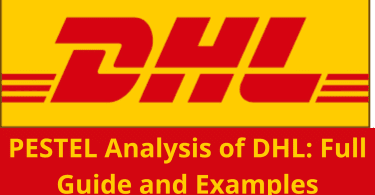
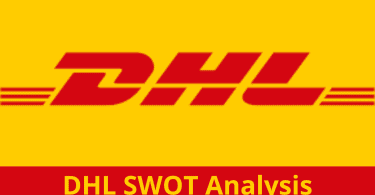


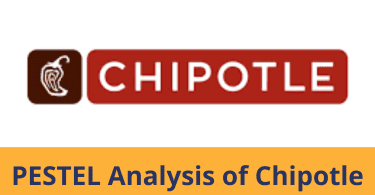

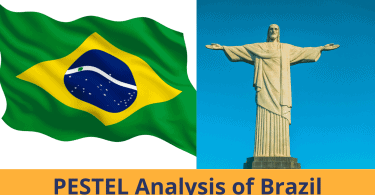
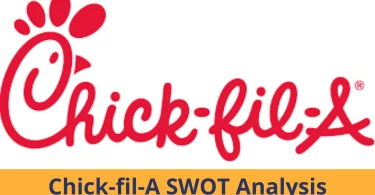
Leave a Comment